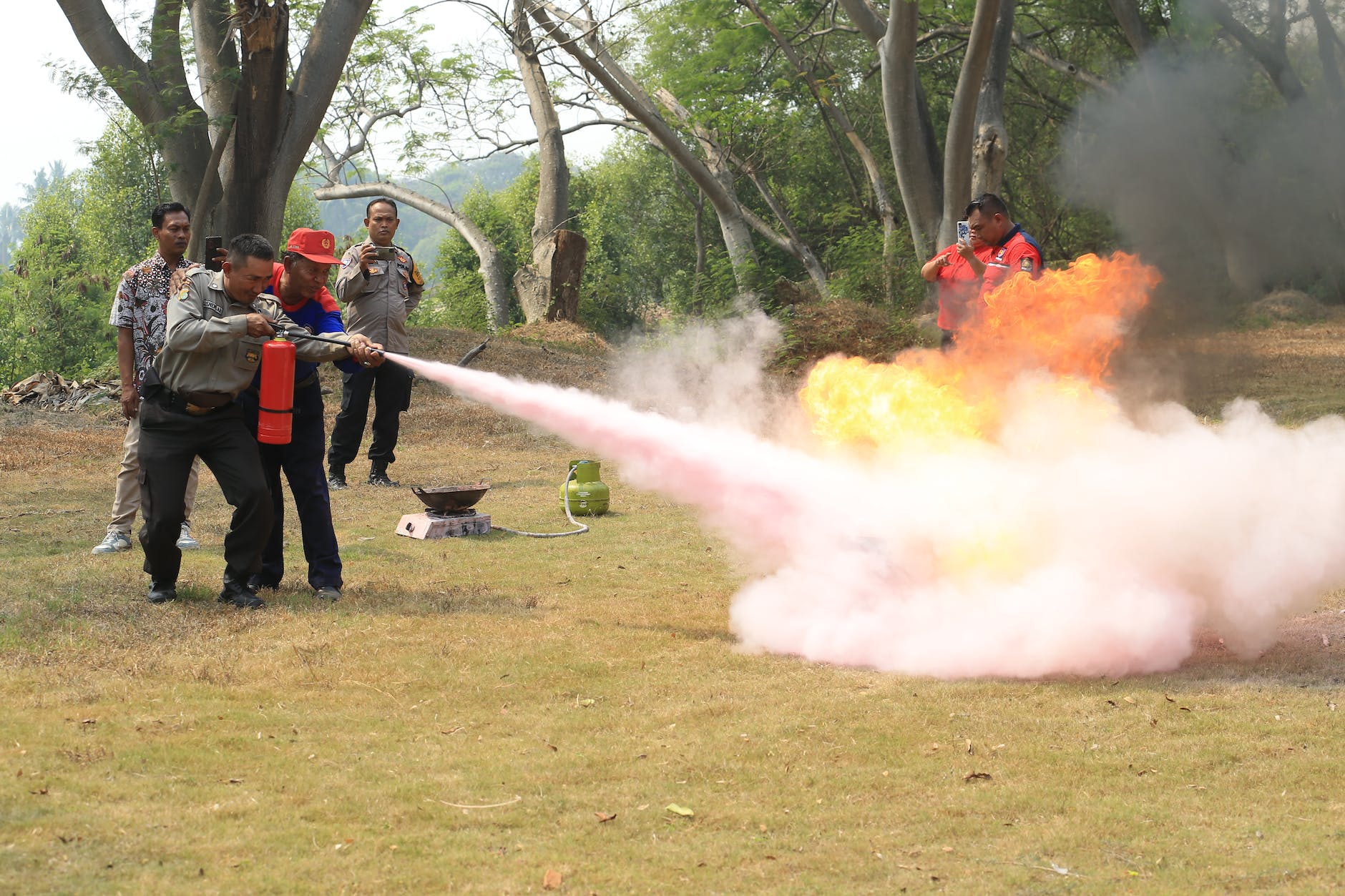
Check for physical damage to the cylinder, hose, nozzle, valve, handle, and other components. Look for cracks, dents, rust, or corrosion.
Verify that the pressure gauge is in the green zone. Check that the nameplate is legible and visible and that the inspection tag is present and dated.
Lift the fire extinguisher and feel its weight to verify it is full.
1. Visual Inspection
Before conducting a fire extinguisher inspection near me, performing a brief visual examination is crucial to identify any physical damage or signs of corrosion. This step is critical because even a minor dent in the extinguisher could make it ineffective during an emergency.
Additionally, the inspector must verify that the pull pin, tamper seal, and inspection tag are intact and legible. The inspector must also ensure the hose and nozzle are clear and unobstructed.
Finally, the inspector must check that the gauge indicator is in the green area. If it is not, the extinguisher must be refilled or replaced immediately. It ensures that the fire extinguisher will be functional in an emergency. It also enhances safety awareness among occupants and employees. Regular inspections encourage a culture of safety and responsibility.
2. Pressure Test
Over time, fire extinguishers can suffer damage or wear and tear. Inspecting the handle, hose, nozzle, and security pin to ensure they are intact and secure is critical. If any of these are damaged, they must be replaced to prevent malfunction during a fire.
Next, the tech must examine the pressure gauge. If the needle is within the green zone, it’s good to go. If it’s in the red area, it’s likely undercharged and needs a recharge or overcharged and should be condemned.
A final visual inspection checks the nozzle for signs of use or abuse, such as rust, corrosion, or deep dents. The technician must also ensure the tamper seal remains intact and that a security pin has not fallen out.
3. Trigger Test
Ensure the handle, hose, and nozzle are free of obstructions and undamaged. Check the tamper seal, pin lock, and inspection tag to make sure they’re all present and intact.
During this step, it is important to briefly discharge the fire extinguisher to ensure it is in proper working condition and ready for use during an emergency. This step is especially important when dealing with CO2 or water extinguishers, as a punctured cylinder could cause the device to malfunction or fail in a real fire.
After you’ve tested the extinguisher, record the inspection date, type of inspection, and any deficiencies found. Finally, you should re-attach the inspection tag and update the next due date. This is critical for ensuring that your facility complies with fire safety regulations.
4. Nozzle Test
A fire extinguisher prevents property damage and saves lives during a fire emergency. Regular inspections are crucial to ensure fire extinguishers are always ready for use in an emergency.
During an inspection, a fire safety professional ensures the extinguisher’s nozzle is in working order and free from obstruction or damage. They also check that the tamper seal and seals are intact and readable.
Finally, they test that the pressure gauge needle is pointing in the green zone. When fully charged, the fire extinguisher is ready for use in an emergency. They then record the inspection tag or label results and return them to the extinguisher hanger, bracket, or cabinet.
5. Weight Test
After ensuring the pin lock is secure, the inspector checks to see that the weight of the extinguisher matches its maintenance tag. This step is particularly important for carbon dioxide fire extinguishers, which do not have a pressure gauge and must be weighed to verify that the tamper seal is intact.
It’s also essential to check that the fire extinguisher is mounted in a highly visible and accessible location so it can be located quickly during an emergency. Finally, the inspector reviews the inspection and maintenance tags (if they are present) to confirm that the current inspection date has been recorded. There are often 6-year maintenance and hydrostatic testing requirements associated with certain fire extinguishers, which the inspector will also review.
